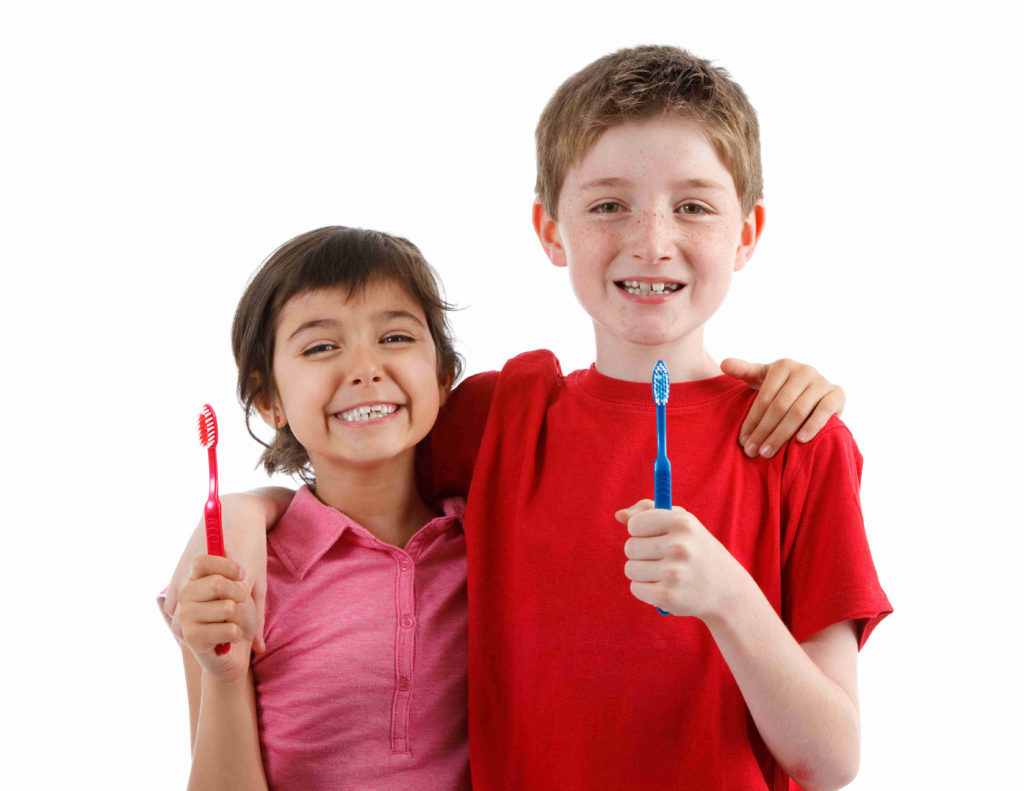Many parents wonder how to teach their children to brush their teeth. From the infant's gums to the appearance of primary teeth, the gestures are different at every age. Find out what our dentists have to say about teaching your children oral hygiene.
Brushing babies' teeth
At birth, newborn babies already have 20 teeth hidden beneath their gums. Some babies are born with one or two teeth. However, on average, they start to erupt between 6 months and 1 year. Teething is most often accompanied by irritability, loss of appetite and/or sleep.
Before the appearance of the first teethbrushing is not necessary. Simply use a compress soaked in saline solution or water to ensure your baby's oral hygiene. To prevent the formation of bacteria in his mouth, always keep an eye on his diet.
Brushing your baby's teeth begins as soon as he or she starts teething. To avoid the formation of dental plaque, it's important to adopt good habits as early as possible. To brush your toddler's teeth, stand behind him/her and hold him/her firmly in your arms. It's important to note that the fluoride content of the toothpaste used varies according to the child's age. But in all cases, the product should be less abrasive.
From the time your baby's first teeth emerge (usually around 6 months) until he's 2 years old, make sure his teeth are brushed once a day, preferably after a meal. You may be surprised to learn that cavities can form as early as the emergence of the first baby tooth. So, when you notice it, it's time to brush. Buy a toothbrush and toothpaste suitable for babies. Find out more in our article on brushing children's teeth.
Teaching 2-year-olds to brush their teeth
When your child reaches the age of 2, the frequency of brushing should be increased slightly. In other words, teeth should be brushed twice a day. From this age onwards, the fluoride content of the toothpaste used should be between 250 ppm and 600 ppm when the child knows how to spit.
Use fluoride toothpaste specially designed for children. The dosage and composition are adapted to the needs of little ones. Fluoride is essential in the fight against tartar build-up and tooth decay. Here are a few tips to give you an idea of how much toothpaste you'll need:
- Before age 3: the size of a grain of rice
- From age 3: the size of a pea
If your child doesn't like the taste of one toothpaste, we recommend you try another. The important thing is to find one that your child likes, so that brushing his or her teeth is a pleasant experience. That said, bear in mind that your child must not swallow the toothpaste. So you'll need to teach him to rinse his mouth and spit into the sink.
What to do from the age of 3
From the age of 3, children's teeth should be brushed twice a day, but with a toothpaste slightly higher in fluoride. Specifically, the product should be fluoridated to between 500 ppm and 1000 ppm.
Teaching 6-year-olds to brush their teeth
After the age of 6, there's still no change in brushing frequency. Indeed, from this age onwards, children should brush 2 times a day. However, parents should buy a fluoride toothpaste between 1000 and 1500 ppm.
Children's oral hygiene also involves learning how to brush. Some will tell you to brush from top to bottom, others from left to right, or even in a circular motion. Whatever the case, the most important thing is to brush every tooth and every surface thoroughly.
You can set up a kind of game to encourage your child to clean all his teeth. For example, tell him to find the hidden tooth. Be aware, however, that children are not able to brush their teeth without the help of an adult before the age of 6 or 8.
HELVIDENT welcomes adults and children to its three dental clinics in Fribourg, Lausanne and Aigle. Our team includes all specialists under one roof. Don't hesitate to Contact us to schedule a dental consultation for your child.

